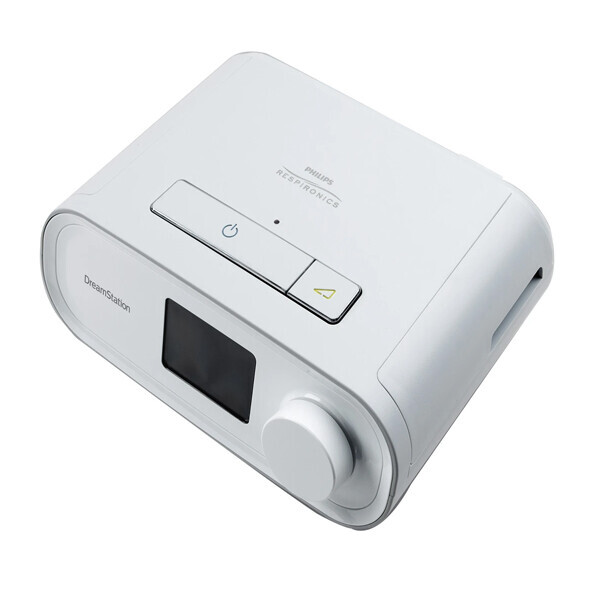
Bilevel positive airway pressure (BiPAP) therapy is often used in the treatment of chronic obstructive pulmonary disease (COPD). COPD is an umbrella term for lung and respiratory diseases that make breathing difficult.
Initially, the therapy was only available as an in-patient treatment within hospitals. Now, it can be done at home with a Bipap machine. Bipap machines are available for purchase as well as rent.
Homeland Healthcare provides bipap machine on rent or purchase to people In Delhi , Noida , Gurgaon and Faridabad as part of their homecare facilities.
Modern BiPAP machines are tabletop devices fitted with tubing and a mask. You simply put the mask over your nose and/or mouth to receive two levels of pressurized air. One pressure level is delivered when you inhale, and a lower pressure is delivered when you exhale. These pressures are prescribed by the doctor who is treating you. Our experts at Homeland Healthcare will then put these pressure settings into the bipap machine for your use at home.
BiPAP machines often feature a “smart” breath timer that adapts to your respiratory patterns. It automatically resets the level of pressurized air when needed to help keep your breathing level on target. These are called Auto Bipap machines and are available from Philips and Resmed at our Homeland Healthcare Facility in Faridabad.
This therapy is a type of noninvasive ventilation (NIV). That’s because BiPAP therapy doesn’t require a surgical procedure, such as intubation or tracheotomy.
If you have COPD, your breathing is likely labored. Shortness of breath and wheezing are common symptoms of COPD, and these symptoms can worsen as the condition progresses.
BiPAP therapy targets these dysfunctional breathing patterns. By having a custom air pressure for when you inhale and a second custom air pressure when you exhale, the machine is able to provide relief to your overworked lungs and chest wall muscles.
This therapy was originally used to treat sleep apnea, and for good reason. When you’re sleeping, your body relies on your central nervous system to lead the breathing process. If you’re resting in a reclined position, you experience more resistance when breathing.
Depending on your individual needs, BiPAP therapy can take place when you’re awake or asleep. Daytime use can limit social interactions, among other things, but may be necessary in certain situations.
Typically, you’ll use a BiPAP machine at night to help keep your airways open while you’re sleeping. This aids the exchange of oxygen with carbon dioxide, making it easier for you to breathe.
For people with COPD, this means less labored breathing during the night. The pressure in your airway encourages a steady flow of oxygen. This allows your lungs to more efficiently transport oxygen to your body and remove excess carbon dioxide.
Research has shown that for people who have COPD and higher carbon dioxide levels, regular nighttime BiPAP use can improve quality of life and breathlessness, and increase long-term survival.
The most common side effects of BiPAP therapy include:
dry nose
nasal congestion
rhinitis
general discomfort
If your mask is loose, you may also experience a mask air leak. This can keep the machine from maintaining the prescribed pressure. If this happens, it can affect your breathing.
To prevent an air leak from happening, it’s crucial that you purchase a mask properly fitted to your mouth, nose, or both. After you put the mask on, run your fingers over the edges to ensure that it’s “sealed” and fitted to your face.
Complications from BiPAP are rare, but BiPAP isn’t an appropriate treatment for all people with respiratory problems. The most concerning complications are related to worsening lung function or injury. Talk with your doctor about the individual risks and benefits you may have with BiPAP therapy. They can help you weigh your options and provide further guidance.
Continuous positive airway pressure (CPAP) is another type of NIV. As with BiPAP, CPAP expels pressurized air from a tabletop device.
The key difference is that CPAP delivers only a single level of preset air pressure. The same continuous pressure is delivered during both inhalation and exhalation. This can make exhaling more difficult for some people.
The singular air pressure can help keep your airways open. But researchers Trusted Source found it isn’t as beneficial for people with COPD unless they also have obstructive sleep apnea.
BiPAP machines provide two different levels of air pressure, which makes breathing out easier than it is with a CPAP machine. For this reason, BiPAP is preferred for people with COPD. It lessens the work it takes to breathe, which is important in people with COPD who expend a lot of energy breathing.
CPAP has the same side effects as BiPAP.
BiPAP can also be used to treat sleep apnea, especially when CPAP hasn’t been helpful.

